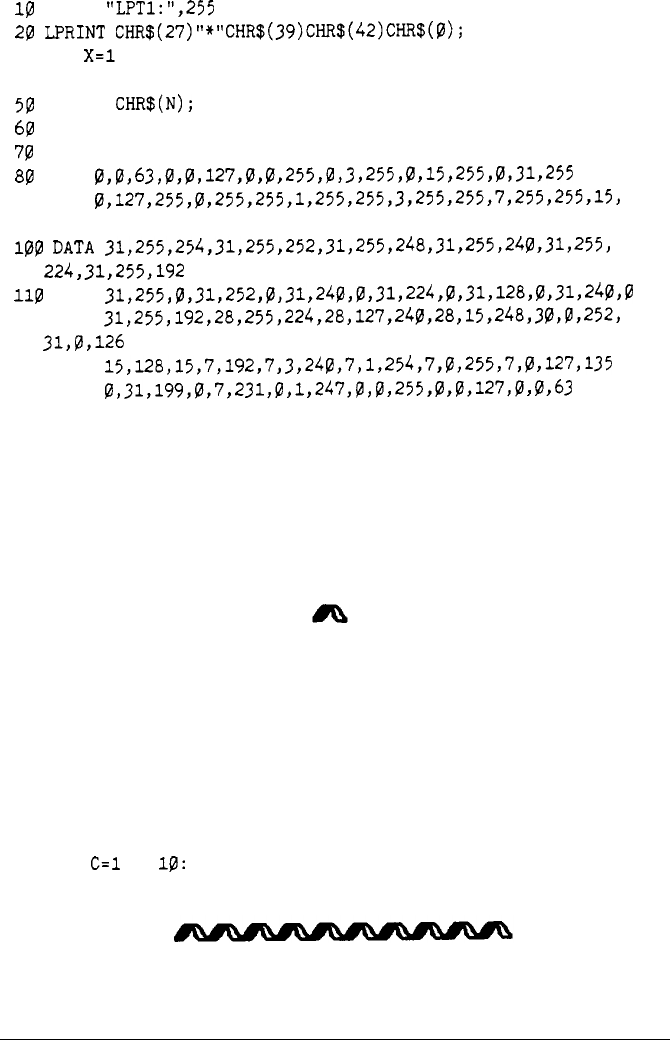
l@
WIDTH
"LPT1:",255
20
LPRINT
CHR$(27)"*"CHR$(39)MR$(~2)C~$(@);
30 FOR
X=1
TO 126
40READN
50
LPRINT
CHR$(N);
60
NEXT X
70
LPRINT
80
DATA
0,0,63,0,0,127,0,0,255,0,3,255~0~15>255,0~31~255
90
DATA
0,127,255,0,255,255,1,255,255,3,255,255,7,255,255~15~
255,255
100
DATA
31,255,254,31,255,252,31,255,248,31,255,240,31,255,
224,31,255,192
110
DATA
31,255,0,31,252,0,31,240,0,31,224,0,31,12~~0~31~240~0
120 DATA
31,255,192,28,255,224,28,127,240,28,15,248,30,0,2521
31,0,126
130
DATA
15,128,15,7,192,7,3,2~~,7,1,25~,7,~~255~7~~~~27~135
140 DATA
0,31,199,0,7,231,0,1,247,0,0,255~0~0~127t0~0~63
In this program, line 20 assigns the graphics option (24-pin triple-density)
with code 39. Code 42 sets the number of pin columns at 42. Lines 80-
140 contain 126 bytes of data (42 pin columns x 3 bytes) for each pin
column. Lines 30-60 print the following design.
Notice that the dots overlap quite a bit. This design was printed using the
triple-density 24-pin graphics option because the density is the same (180
dots to the inch) in both directions.
Adding the following lines to the preceding program causes the pattern
to print 10 times in a row as shown below.
15 FOR
C=l
TO
10:
RESTORE
65 NEXT C
Using Software and Graphics
4-21


















